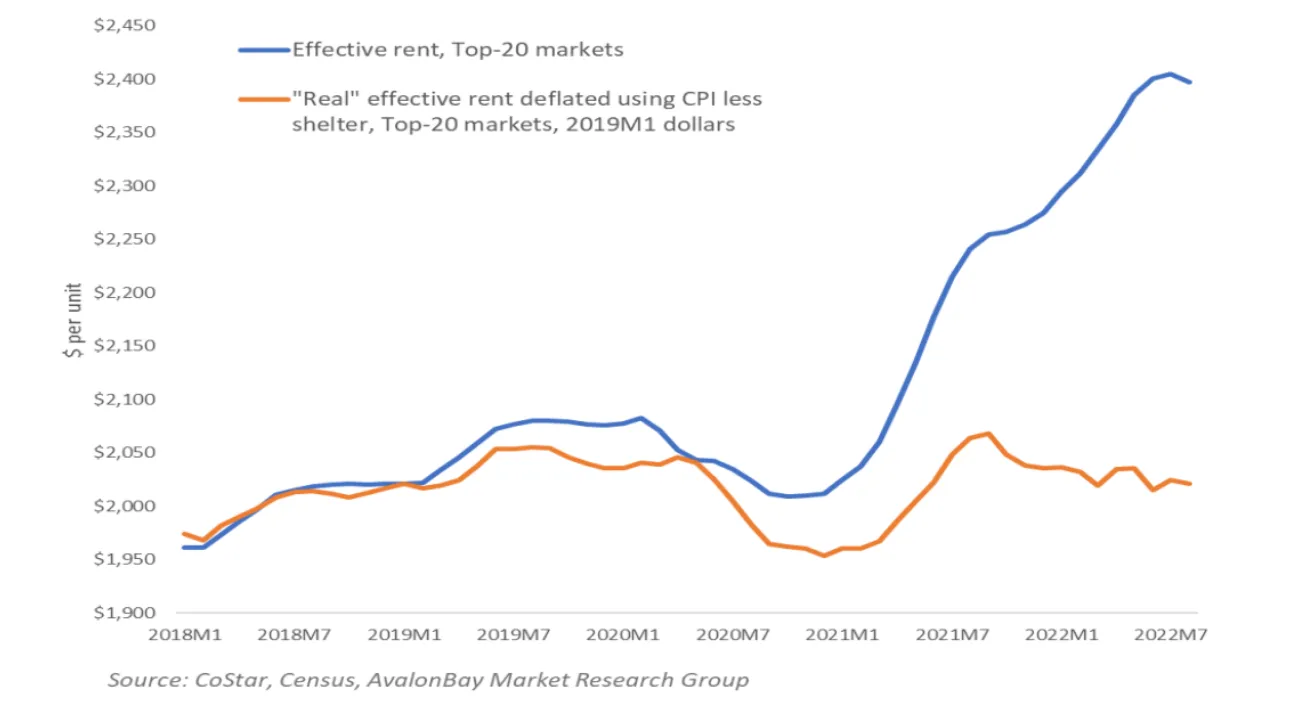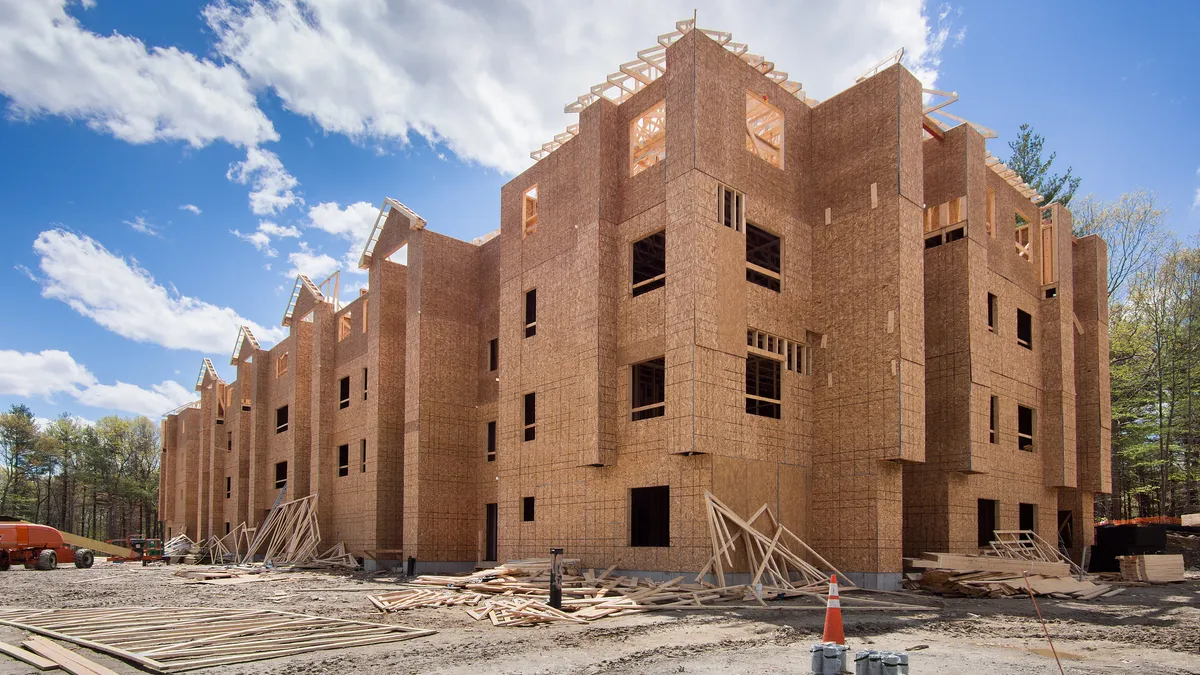Apartment rents did not spiral out of control over the past year, despite what investors, policymakers and disgruntled renters might think — and the Fed is largely to blame for that illusion, according to Craig Thomas, AvalonBay senior vice president for market research.
Thomas explained the “surreal year that we find ourselves amid” during a session of the MSCI Global Real Assets Conference earlier this month.
Thomas compared effective rent in the top 20 U.S. markets, which “shot up like a hockey stick” in 2021, with inflation-adjusted rent, which peaked well below effective rent in 2021 and has been declining ever since.
“Folks are oftentimes reluctant to look at real rents, only because rent shelter takes up an enormous share of overall topline the Consumer Price Index,” Thomas said.

But when he adjusted for inflation and then compared that real effective rent with the nominal effective rent of dollars per unit, Thomas found that real effective rent has not grown nearly as dramatically over the past year.
When apartment owners and investors saw effective rents skyrocketing, they convinced themselves “something special” was occurring, Thomas said. “This was a new golden age of apartment demand. We weren’t sure exactly where the demand was coming from, but this was special — and it allowed a lot of people to say, ‘Let’s assume something different in the future, and let’s push the boundaries of underwriting.’”
Critics, watching the meteoric rise of effective rent throughout 2021 and 2022, blamed the multifamily industry for taking advantage of renters during difficult times, Thomas said, making apartments a hot-button issue.
But according to Thomas, “there was no magical new demand for apartments that came out of nowhere … and there were no rapacious landlords pushing rents up by crazy amounts,” he said. “What we had was inflation, not generated by any of us but by the difficulties of COVID and the supply pipeline and because of significant fiscal stimulus as a result of global monetary policy.”
Thomas said he believes rents shot up because “we’ve flooded the world with money,” adding, “It’s nobody’s fault except for the people who flooded the world with money.”
Inflation, expectations and interest rates
Jim Costello, the chief economist for real estate at MSCI who moderated the panel, interpreted Thomas’ numbers as “an economic story” about how inflation and expectations change behavior.
“The way I read it, it’s just a difference of expectations around inflation, people getting too excited on the acquisition side because of the nominal rents growing, and people getting too excited on the public policy side and overreacting because the nominal rents are growing,” Costello said.
Rent projections “really come down to central banks,” said Peter Hayes, global head of investment research for PGIM Real Estate, who presented a chart illustrating the intersection of job growth and the occupier market. Hayes’ chart indicates that employment forecasters have historically underestimated job growth and appear to be doing so again in 2022.
The good news is that stronger job growth translates into a more resilient occupier market and better rental growth, Hayes said, but the bad news is that wage inflation could cause central banks to continue raising interest rates and keep them higher for longer.
“Nobody really understands what’s going on in the labor market,” Hayes said. “And that’s the puzzle that central banks are wrestling with at the moment.”









